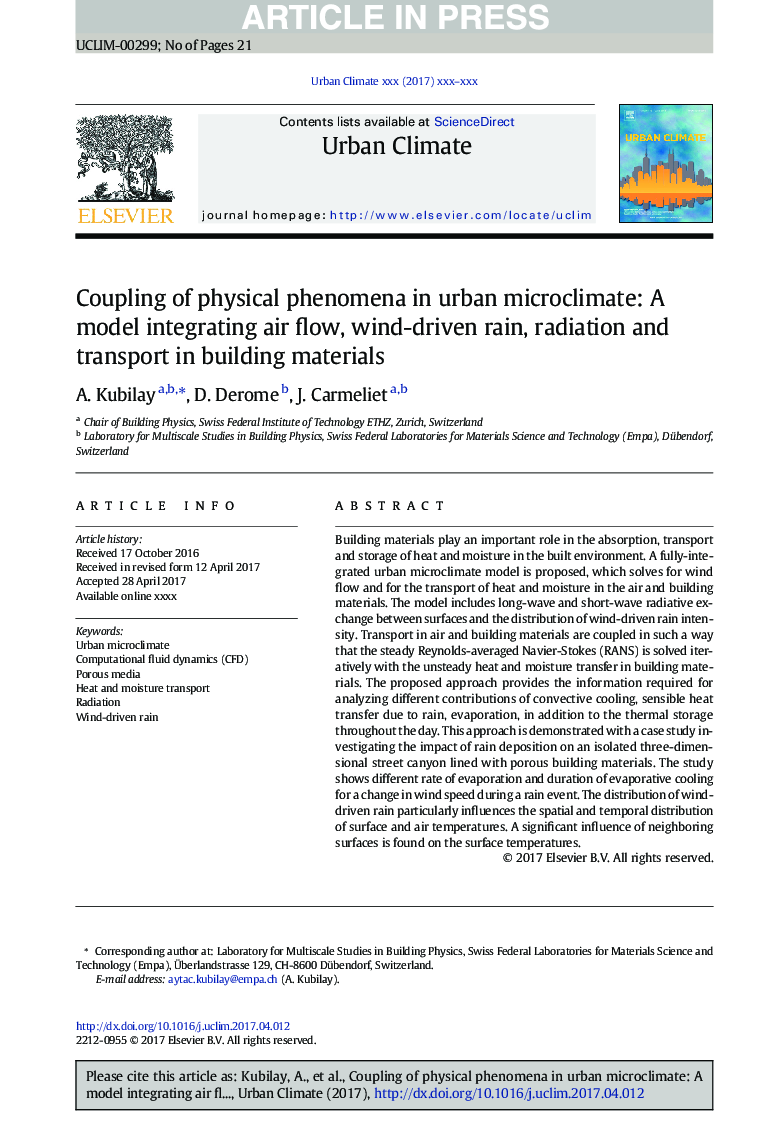| Article ID | Journal | Published Year | Pages | File Type |
|---|---|---|---|---|
| 6576881 | Urban Climate | 2018 | 21 Pages |
Abstract
Building materials play an important role in the absorption, transport and storage of heat and moisture in the built environment. A fully-integrated urban microclimate model is proposed, which solves for wind flow and for the transport of heat and moisture in the air and building materials. The model includes long-wave and short-wave radiative exchange between surfaces and the distribution of wind-driven rain intensity. Transport in air and building materials are coupled in such a way that the steady Reynolds-averaged Navier-Stokes (RANS) is solved iteratively with the unsteady heat and moisture transfer in building materials. The proposed approach provides the information required for analyzing different contributions of convective cooling, sensible heat transfer due to rain, evaporation, in addition to the thermal storage throughout the day. This approach is demonstrated with a case study investigating the impact of rain deposition on an isolated three-dimensional street canyon lined with porous building materials. The study shows different rate of evaporation and duration of evaporative cooling for a change in wind speed during a rain event. The distribution of wind-driven rain particularly influences the spatial and temporal distribution of surface and air temperatures. A significant influence of neighboring surfaces is found on the surface temperatures.
Keywords
Related Topics
Physical Sciences and Engineering
Earth and Planetary Sciences
Earth and Planetary Sciences (General)
Authors
A. Kubilay, D. Derome, J. Carmeliet,
